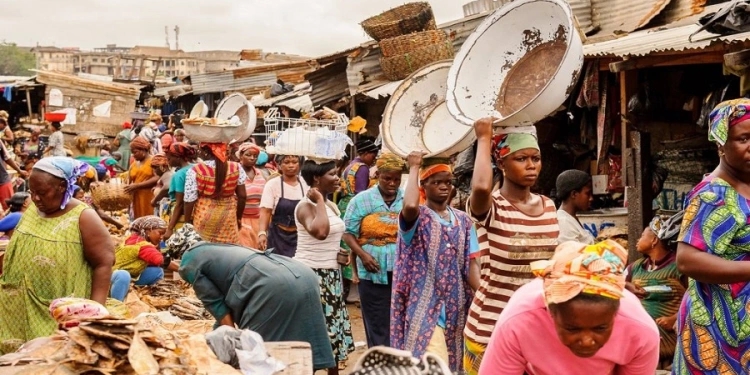The National Bureau of Statistics (NBS) has revealed that 63% of persons living in Nigeria (133 million people) are multidimensionally poor.
This is according to a press statement issued by the NBS on Thursday on the highlight of the result of the 2022 Multidimensional Poverty Index (MPI) Survey.
According to the report, Over half of the population of Nigeria is multidimensionally poor, with multidimensional poverty higher in rural areas, where 72% of people are poor, compared to 42% of people in urban areas.
Highlight of the report: The report also revealed that the national MPI is 0.257, which means poor people in Nigeria experience just over one-quarter of all possible deprivations.
- 65% of the poor (86 million people) live in the North, while 35% (nearly 47 million) live in the South. Poverty levels across states vary significantly, with the incidence of multidimensional poverty ranging from a low of 27% in Ondo to a high of 91% in Sokoto.
- Over half of the population of Nigeria is multidimensionally poor and cooks with dung, wood, or charcoal, rather than clean energy. High deprivations also appeared nationally in sanitation, time to healthcare, food insecurity, and housing.
- In general, the incidence of monetary poverty is lower than the incidence of multidimensional poverty across most states. In Nigeria, 40.1% of people were poor, based on the 2018/19 national monetary poverty line, and 63% are multidimensionally poor according to the National MPI 2022.
- Multidimensional poverty is higher in rural areas, where 72% of people are poor, compared to 42% of people in urban areas.
- The national MPI is reported with a linked Child MPI, which provides additional information on multidimensional child poverty in Nigeria.
According to the report, Two-thirds (67.5%) of children (0–17) are multidimensionally poor, based on the national MPI, and a little over half (51%) of all poor people are children.
